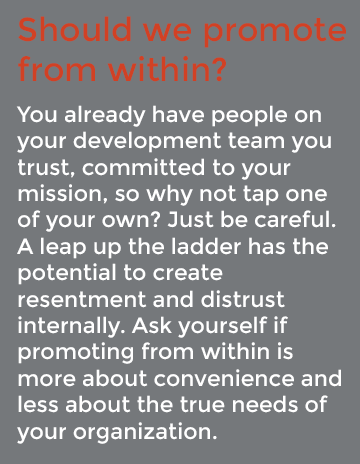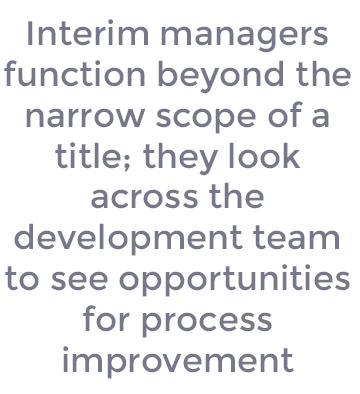

Staff turnover is, in a word, costly. Most of us in development view it as a clear negative. Team members are loaded with extra work until a replacement is found and onboarded. We often lose institutional knowledge and individual expertise. Turnover—especially at the development director level—can damage donor relationships, erode confidence in the development office, and lower morale.
But enough with the negative. Let’s take a look at what we can learn from turnover. What would happen if you treated the departure of a head of development as an opportunity to reframe and reconsider what your organization needs?

Apply what you know about donor relationships to your development staff. You already know the value of relationship-based fundraising. What would your development team look like if you approached all your interactions with the same focus on building lasting, fruitful relationships?
Consider interim management (IM). Nonprofit institutions often don’t consider this option because, on the surface, it seems expensive. But according to the Center for American Progress, it can cost businesses up to 213 percent of annual salary to replace an executive-level employee. For a director of development with an annual salary (including benefits) of $100,000, that’s $213,000. And hopefully, you hired the right person and do not have to start again.
The return on investment of interim management may be higher than you think:
 IM can identify areas of inefficiencies and opportunity. Though they may be filling a specific role, interim managers function beyond the narrow scope of a title; they look across the development team to see opportunities for process improvement.
IM can identify areas of inefficiencies and opportunity. Though they may be filling a specific role, interim managers function beyond the narrow scope of a title; they look across the development team to see opportunities for process improvement.
When a development director leaves, it’s natural to feel concerned. An interim manager can help you get back to the basics of fundraising—relationships—and maximize the opportunity for your organization.
Because of Campbell & Company’s expertise in fundraising, our interim management can not only provide direction for your development team, but also develop a plan for greater success in the future.